This list of mammals of Estonia shows the IUCN Red List status of the mammal fauna occurring in Estonia. It is somewhat impoverished compared to that of southern and central Europe due to the short period since the last ice age. Native species are considered to be those which are today present in the country. There are no endemic mammal species in Estonia. The list follows Moks et al. (2015) with later additions.
The following tags are used to highlight each species' conservation status as assessed on the IUCN Red List published by the International Union for Conservation of Nature:
| EX | Extinct | Species is completely extinct |
| EW | Extinct in the wild | Known only to survive in captivity or as a naturalized populations well outside its previous range. |
| CR | Critically endangered | The species is in imminent risk of extinction in the wild. |
| EN | Endangered | The species is facing an extremely high risk of extinction in the wild. |
| VU | Vulnerable | The species is facing a high risk of extinction in the wild. |
| NT | Near threatened | The species does not meet any of the criteria that would categorise it as risking extinction but it is likely to do so in the future. |
| LC | Least concern | There are no current identifiable risks to the species. |
| DD | Data deficient | There is inadequate information to make an assessment of the risks to this species. |
Order: Eulipotyphla (shrews, hedgehogs, gymnures, moles and solenodons)

Eulipotyphlans are insectivorous mammals. Shrews and solenodons resemble mice, hedgehogs carry spines, gymnures look more like large rats, while moles are stout-bodied burrowers.
- Family: Erinaceidae (hedgehogs)
- Subfamily: Erinaceinae
- Genus: Erinaceus
- West European hedgehog, E. europaeus LC
- Northern white-breasted hedgehog, E. roumanicus LC
- Genus: Erinaceus
- Subfamily: Erinaceinae

- Family: Soricidae (shrews)
- Subfamily: Soricinae
- Tribe: Nectogalini
- Genus: Neomys
- Eurasian water shrew, Neomys fodiens LC
- Mediterranean water shrew, Neomys anomalus LC
- Genus: Neomys
- Tribe: Soricini
- Genus: Sorex
- Common shrew, Sorex araneus LC
- Laxmann's shrew, Sorex caecutiens LC
- Eurasian pygmy shrew, Sorex minutus LC
- Eurasian least shrew, Sorex minutissimus LC (one uncertain finding from 1971)
- Genus: Sorex
- Tribe: Nectogalini
- Subfamily: Soricinae
- Family: Talpidae (moles)
- Subfamily: Talpinae
- Tribe: Talpini
- Genus: Talpa
- European mole, Talpa europaea LC
- Genus: Talpa
- Tribe: Talpini
- Subfamily: Talpinae
Order: Chiroptera (bats)
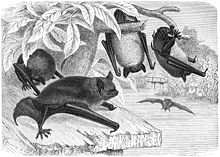
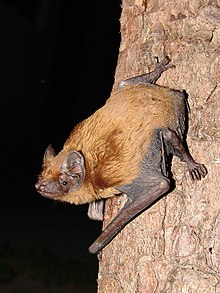
The bats' most distinguishing feature is that their forelimbs are developed as wings, making them the only mammals capable of flight. Bat species account for about 20% of all mammals.
- Family: Vespertilionidae
- Subfamily: Myotinae
- Genus: Myotis
- Brandt's bat, Myotis brandti LC
- Pond bat, Myotis dasycneme VU
- Daubenton's bat, Myotis daubentonii LC
- Whiskered bat, Myotis mystacinus LC
- Natterer's bat, Myotis nattereri LC
- Genus: Myotis
- Subfamily: Vespertilioninae
- Genus: Barbastella
- Western barbastelle, B. barbastellus NT (unproven)
- Genus: Eptesicus
- Northern bat, Eptesicus nilssoni LC
- Genus: Nyctalus
- Common noctule, Nyctalus noctula LC
- Genus: Pipistrellus
- Nathusius' pipistrelle, Pipistrellus nathusii LC
- Common pipistrelle, Pipistrellus pipistrellus LC
- Soprano pipistrelle, Pipistrellus pygmaeus LC
- Genus: Plecotus
- Brown long-eared bat, P. auritus LC
- Genus: Vespertilio
- Parti-coloured bat, Vespertilio murinus LC
- Genus: Barbastella
- Subfamily: Myotinae
Order: Lagomorpha (lagomorphs)

The lagomorphs comprise two families, Leporidae (hares and rabbits), and Ochotonidae (pikas). Though they can resemble rodents, and were classified as a superfamily in that order until the early twentieth century, they have since been considered a separate order. They differ from rodents in a number of physical characteristics, such as having four incisors in the upper jaw rather than two.
- Family: Leporidae (rabbits, hares)
- Genus: Lepus
- European hare, L. europaeus LC
- Mountain hare, L. timidus LC
- Genus: Lepus
Order: Rodentia (rodents)
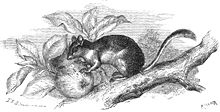

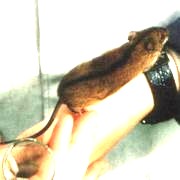
Rodents make up the largest order of mammals, with over 40% of mammalian species. They have two incisors in the upper and lower jaw which grow continually and must be kept short by gnawing. Most rodents are small though the capybara can weigh up to 45 kg (99 lb).
- Suborder: Sciurognathi
- Family: Castoridae (beavers)
- Genus: Castor
- Eurasian beaver, C. fiber LC
- Genus: Castor
- Family: Sciuridae (squirrels)
- Subfamily: Sciurinae
- Tribe: Sciurini
- Genus: Sciurus
- Red squirrel, S. vulgaris LC
- Genus: Sciurus
- Tribe: Sciurini
- Tribe: Pteromyini
- Genus: Pteromys
- Siberian flying squirrel, P. volans NT
- Genus: Pteromys
- Subfamily: Sciurinae
- Family: Gliridae (dormice)
- Subfamily: Leithiinae
- Genus: Eliomys
- Garden dormouse, Eliomys quercinus VU (last sighted in 1986)
- Genus: Muscardinus
- Hazel dormouse, Muscardinus avellanarius NT (last sighted in 1986)
- Genus: Eliomys
- Subfamily: Leithiinae
- Family: Dipodidae (jerboas)
- Subfamily: Sicistinae
- Genus: Sicista
- Northern birch mouse, Sicista betulina NT
- Genus: Sicista
- Subfamily: Sicistinae
- Family: Cricetidae
- Subfamily: Arvicolinae
- Genus: Arvicola
- European water vole or north-western water vole, Arvicola amphibius LC
- Genus: Clethrionomys
- Bank vole, Myodes glareolus or Clethrionomys glareolus LC
- Genus: Microtus
- Field vole, Microtus agrestis LC
- Common vole, Microtus arvalis LC
- Root vole, Microtus oeconomus LC (one lower jaw found in 1970)
- Sibling vole, Microtus levis LC
- European pine vole, Microtus subterraneus LC
- Genus: Myopus
- Wood lemming, Myopus schisticolor LC (first found in 2019)
- Genus: Ondatra
- Muskrat, Ondatra zibethicus LC (introduced)
- Genus: Arvicola
- Subfamily: Arvicolinae
- Family: Muridae (mice, rats, voles, gerbils, hamsters, etc.)
- Subfamily: Murinae
- Genus: Apodemus
- Striped field mouse, Apodemus agrarius LC
- Yellow-necked mouse, Apodemus flavicollis LC
- Ural field mouse, Apodemus uralensis LC
- Genus: Micromys
- Harvest mouse, Micromys minutus NT
- Genus: Rattus
- Genus: Mus
- House mouse, Mus musculus LC
- Genus: Apodemus
- Subfamily: Murinae
- Family: Castoridae (beavers)
Order: Carnivora (carnivorans)
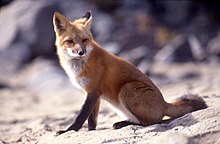
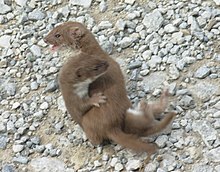

There are over 260 species of carnivorans, the majority of which feed primarily on meat. They have a characteristic skull shape and dentition.
- Suborder: Feliformia
- Family: Felidae (cats)
- Subfamily: Felinae
- Genus: Lynx
- Eurasian lynx, L. lynx LC
- Genus: Lynx
- Subfamily: Felinae
- Family: Felidae (cats)
- Suborder: Caniformia
- Family: Canidae (dogs, foxes)
- Genus: Canis
- Gray wolf, C. lupus LC
- European jackal, C. aureus moreoticus LC (first found in 2013)
- Genus: Nyctereutes
- Raccoon dog, N. procyonoides LC (introduced)
- Genus: Vulpes
- Red fox, V. vulpes LC
- Genus: Canis
- Family: Ursidae (bears)
- Genus: Ursus
- Brown bear, U. arctos LC
- Genus: Ursus
- Family: Mustelidae (mustelids)
- Genus: Gulo
- Wolverine, G. gulo LC (only five proven sightings during the 20th century and none during the 21st)
- Genus: Lutra
- European otter, L. lutra NT
- Genus: Martes
- Pine marten, M. martes LC
- Beech marten, M. foina LC
- Genus: Meles
- European badger, M. meles LC
- Genus: Mustela
- Stoat, M. erminea LC
- European mink, M. lutreola CR reintroduced
- Least weasel, M. nivalis LC
- European polecat, M. putorius LC
- Genus: Neogale
- American mink, N. vison LC introduced
- Genus: Gulo
- Family: Phocidae (pinnipeds especially earless seals)
- Genus: Halichoerus
- Grey seal, H. grypus LC
- Genus: Pusa
- Ringed seal, P. hispida LC
- Genus: Halichoerus
- Family: Canidae (dogs, foxes)
Order: Cetacea (whales)

The order Cetacea includes whales, dolphins and porpoises. They are the mammals most fully adapted to aquatic life with a spindle-shaped nearly hairless body, protected by a thick layer of blubber, and forelimbs and tail modified to provide propulsion underwater.
- Suborder: Odontoceti
- Family: Phocoenidae (porpoises)
- Genus: Phocoena
- Harbour porpoise, Phocoena phocoena VU (last proven sighting in 1988)
- Genus: Phocoena
- Family: Monodontidae (narwhals)
- Genus: Delphinapterus
- Beluga, Delphinapterus leucas VU (last sighted in 1985)
- Genus: Delphinapterus
- Family: Delphinidae (marine dolphins)
- Genus: Lagenorhynchus
- White-beaked dolphin, Lagenorhynchus albirostris LC (sighted once in 2008)
- Genus: Tursiops
- Bottlenose dolphin, Tursiops truncatus DD (sighted once in 2020 and maybe also in 2015)
- Genus: Lagenorhynchus
- Family: Phocoenidae (porpoises)
Order: Artiodactyla (even-toed ungulates)

The even-toed ungulates are ungulates whose weight is borne about equally by the third and fourth toes, rather than mostly or entirely by the third as in perissodactyls. There are about 220 artiodactyl species, including many that are of great economic importance to humans.
- Family: Suidae (pigs)
- Family: Cervidae (deer)
- Subfamily: Cervinae
- Genus: Cervus
- Genus: Dama
- European fallow deer, D. dama LC (introduced, few sightings since 2012)
- Subfamily: Capreolinae
- Subfamily: Cervinae
See also
- Fauna of Estonia
- List of chordate orders
- Lists of mammals by region
- List of prehistoric mammals
- Mammal classification
- List of mammals described in the 2000s
External links
- Eesti imetajate levikuatlas (in Estonian)
References
- ^ Moks, Epp; Remm, Jaanus; Kalda, Oliver; Valdmann, Harri (2015). Eesti imetajad [Estonian mammals] (in Estonian). Varrak. ISBN 978-9985-3-3470-6.
- Amori, G. (2016). "Erinaceus europaeus". IUCN Red List of Threatened Species. 2016: e.T29650A2791303.
- Amori, G.; Hutterer, R.; Kryštufek, B.; Yigit, N.; Mitsain, G. & Palomo, L.J. (2016). "Erinaceus roumanicus". IUCN Red List of Threatened Species. 2016: e.T136344A115206348.
- ^ Timm, Uudo (2020). "Väike-vesimutt ja metslemming Eestis" [Mediterranean water shrew and wood lemming in Estonia] (PDF). Eesti Loodus (in Estonian) (3): 58-60.
- Piraccini, R. (2016). "Barbastella barbastellus". IUCN Red List of Threatened Species. 2016: e.T2553A22029285.
- ^ Timm, Uudo; Maran, Tiit (2020). "Kui palju on muutunud imetajate fauna Eestis?" [How much mammalian fauna in Estonia has changed?] (PDF). Eesti Loodus (in Estonian) (3): 12–21.
- Gazaryan, S.; Kruskop, S.V. & Godlevska, L. (2021) . "Plecotus auritus". IUCN Red List of Threatened Species. 2020: e.T85535522A195861341.
- Hacklande, K. & Schai-Braun, S. (2019). "Lepus europaeus". IUCN Red List of Threatened Species. 2019: e.T41280A45187424.
- Smith, A.T. & Johnston, C.H. (2019). "Lepus timidus". IUCN Red List of Threatened Species. 2019: e.T11791A45177198.
- Batbold, J.; Batsaikhan, N.; Shar, S.; Hutterer, R.; Kryštufek, B.; Yigit, N.; Mitsain, G.; Palomo, L. (2016). "Castor fiber". IUCN Red List of Threatened Species. 2016: e.T4007A115067136.
- Amori, G.; Hutterer, R.; Kryštufek, B.; Yigit, N.; Mitsain, G.; Muñoz, L. J. P. (2010). "Sciurus vulgaris". IUCN Red List of Threatened Species. 2010: e.T20025A9136220.
- Breitenmoser, U.; Breitenmoser-Würsten, C.; Lanz, T.; von Arx, M.; Antonevich, A.; Bao, W. & Avgan, B. (2015). "Lynx lynx". IUCN Red List of Threatened Species. 2015: e.T12519A121707666.
- Boitani, L.; Phillips, M. & Jhala, Y. (2018). "Canis lupus". IUCN Red List of Threatened Species. 2018: e.T3746A119623865. doi:10.2305/IUCN.UK.2018-2.RLTS.T3746A119623865.en.
{{cite journal}}: CS1 maint: multiple names: authors list (link) - Hoffmann, M.; Sillero-Zubiri, C. (2016). "Vulpes vulpes". IUCN Red List of Threatened Species. 2016: e.T23062A46190249. doi:10.2305/IUCN.UK.2016-1.RLTS.T23062A46190249.en.
- McLellan, B. N.; Proctor, M. F.; Huber, D. & Michel, S. (2017). "Ursus arctos". IUCN Red List of Threatened Species. 2017: e.T41688A121229971. doi:10.2305/IUCN.UK.2017-3.RLTS.T41688A121229971.en.
- Roos, A.; Loy, A.; de Silva, P.; Hajkova, P.; Zemanová, B. (2015). "Lutra lutra". IUCN Red List of Threatened Species. 2015: e.T12419A21935287. doi:10.2305/IUCN.UK.2015-2.RLTS.T12419A21935287.en.
- Kranz, A.; Abramov, A. V.; Herrero, J. & Maran, T. (2016). "Meles meles". IUCN Red List of Threatened Species. 2016: e.T29673A45203002.
- Maran, T.; Aulagnier, S.; Libois, R.; Kranz, A.; Abramov, A. & Wozencraft, C. (2010). "Mustela lutreola". IUCN Red List of Threatened Species. 2010: e.T14018A4381596.
- Reid, F.; Schiaffini, M.; Schipper, J. (2016). "Neovison vison". IUCN Red List of Threatened Species. 2016: e.T41661A45214988.
- Jüssi, Ivar (2020). "Hülged tunnevad jääst ja lumest puudust" [Seals miss ice and snow] (PDF). Eesti Loodus (2): 42–47.
- Ernits, Peeter (1986). "Valgevaal Eesti vetes" [Beluga in Estonian water]. Eesti Loodus (8): 529–533.
- ^ "Dolphins sighted in Kopli Bay in Estonia". The Baltic Course. 2 June 2020. Retrieved 30 December 2022.
| List of mammals of Europe | |
|---|---|
| Sovereign states |
|
| States with limited recognition | |
| Dependencies and other entities | |